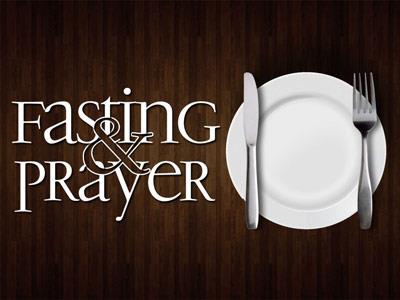-
Revival: A Surprising Move Of God (Pt.2) Series
Contributed by Mike Fogerson on Nov 28, 2017 (message contributor)
Summary: Any outpouring of the Spirit has its origin in the heart of God Himself. But, it’s birthed in the burden of believers who are in prayer.
Revival: A Surprising Move of God (Pt.2)
September 9, 2015 CFBC, Chester, IL Dr. Mike Fogerson
A “Lord, what will You have me to do?”
1 On September 23, 1857, Jeremiah Lanphier (a missionary, street corner preacher, door-to-door soul winner) prayed this prayer out of a heart that was broken for the people of New York.
a Within two months of Lanphier praying this prayer to God, there would be 50,000 gathering in prayer meetings.
b Any outpouring of the Spirit has its origin in the heart of God Himself. But, it’s birthed in the burden of believers who are in prayer.
2 Matthew Henry, “When God desires to do a fresh work, He sets His people to praying.”
a The Laymen’s Prayer Revival of 1857-59, considered by Perry Miller of Harvard to be the most important event of that century, started with a desperate, concerted prayer from the ordinary church members.
b The fires of the Second Great Awakening (1787-1843) had grown cold, churches became stagnant.
aa Most churches were not growing enough to outpace the losses they were sustained by death, removal, or discipline, while a widespread indifference to religion became prevalent during the years leading up to the Layman’s Prayer Revival.
bb Our nation was rich, doing well: President James Buchanan said on March 4, 1857, “No nation has ever before been embarrassed from too large a surplus in its treasury.” During the same inaugerial speech he said that corruption was thriving as the result of the love of money over public virtue.
cc “Men forgot God in pursuit of gold.” one writer described the national landscape.
B At the height of this economic boon, the bottom dropped out of our economy (October 14, 1857, btw, a Shemitah year) and the east coast was financially decimated.
1 Preachers were saying that the collapse was God’s judgement of America’s sin. (Called their congregations to prayer, fasting)
a Some revival historians see the Layman’s Prayer Revival simply as a knee jerk reaction to the economic panic.
aa Samuel Prime, editor of the daily New York Observer, observed that the prayers had began prior to the bank collapse.
bb However, when people didn’t have jobs . . . they had plenty of time to go to prayer meetings.
b As a nation, we were also feeling the tensions of slavery (Nation was divided, ideologically, economically, racially).
2 The Layman’s Prayer Revival wasn’t planned, organized, under the leadership of one person . . . not one voice calling for “revival.”
a It was birthed from the hearts of the believers in individual churches, across denominations.
aa However, the revival that would take place nationally would start in the same place that every awakeing occurs, “pleas for explicit agreement and visible union of the people of God in extraordinary prayer for revival of religion and the advancement of Christ’s kingdom on earth.” -Jonathan Edwards (1740's)
bb This awakening didn’t come as a river at first . . . started in puddles (Here & there)
b In 1857, FBC Beaufort, South Carolina baptized 428 people in 4 months, a similiar move took place at a Methodist churches in Columbia.
aa In Pittsfield, Massachusetts, one out 15 residents came to Christ.
bb God was sending revival rain to localized congregations and didn’t notice the signs on the lawn, but the hearts of the laity.
cc Presbyterians, Methodist, and began in North Dutch Reformed Church on Fulton Street in New York City.
c Lanphier’s meeting started with an hour-prayer meeting at that church from 12 to 1 in the afternoon (free/spontanous).
aa The first meeting, he was alone, then by the end of the hour six; next meeting 20, next meeting 30-40.
bb October 14 (over 100), people started getting saved, within a six months 50 thousand were meeting in NY to pray . . . in other cities, thousands more would be praying for their city.
3 The thing about the Layman’s Prayer Revival is that most the churches that experienced revival were unnoticed churches.
a “I have reason to know, and with intense pleasure stated here, that some of the most remarkably favored churches have been those that are out of the great centers of attraction, in the retired or waste places of the city.”
b Another difference, free of emotional excess that characterized the second great awakening/camp meetings.
aa Prayer Revival was marked with calm, deep solemnity.
bb Witness,”The most crowded meetings were solemn by their deep and strange stillness; the most thorough conviction and terrible anxiety showed themselves in concentrated meditation and half-suppressed and deep drawn signs; while the joy and hope and forgiveness told of its presence by tears which made the eyes they moistened more radiant than ever.”
c The Prayer Revival touched every city in the Midwest: Cincinnati, Cleveland, Louisville, Indianapolis, Detroit, Chicago, and St. Louis.

 Sermon Central
Sermon Central



